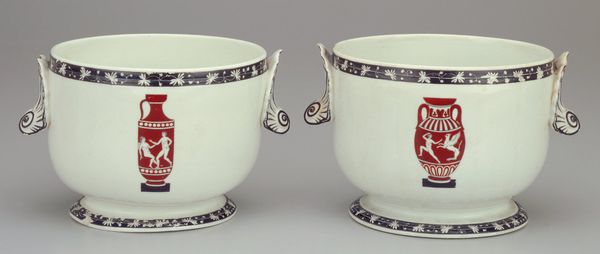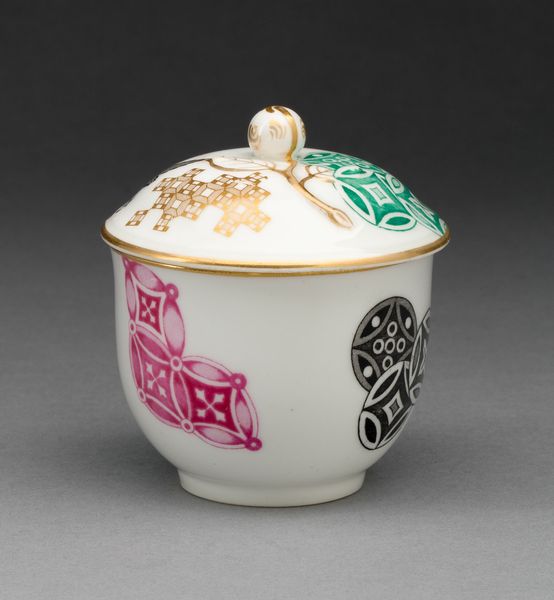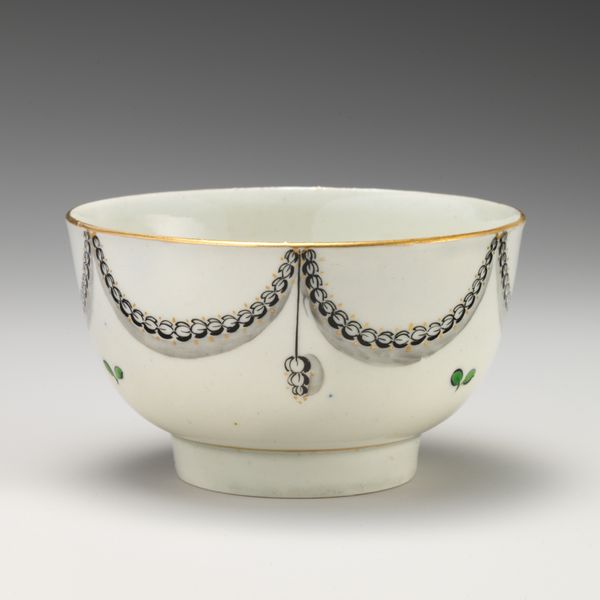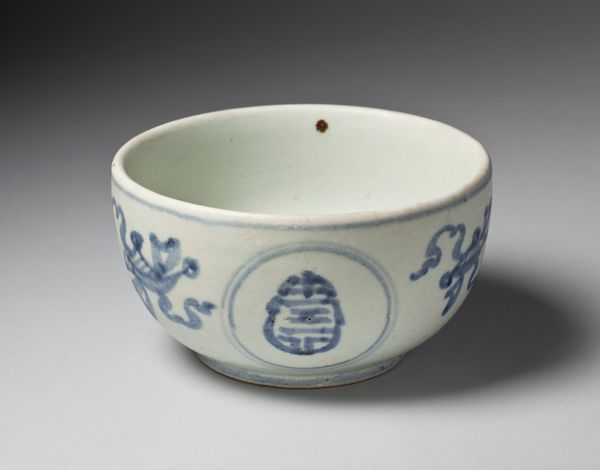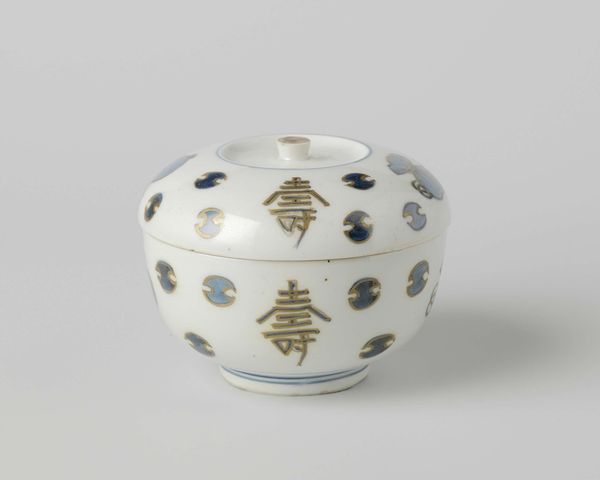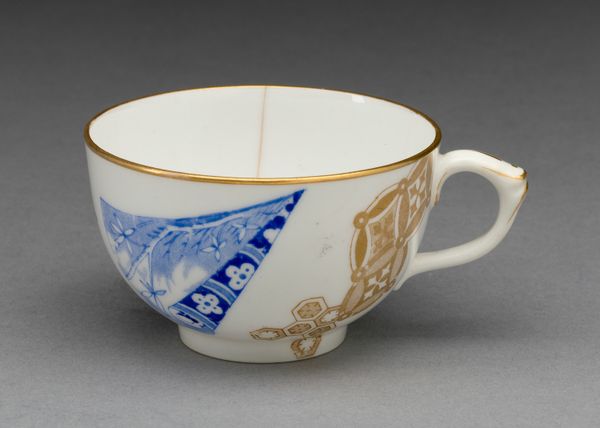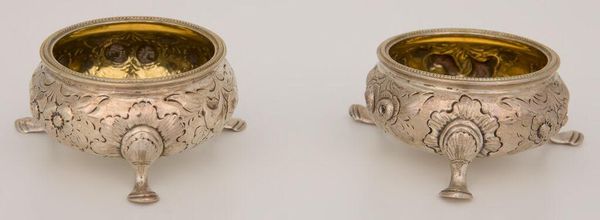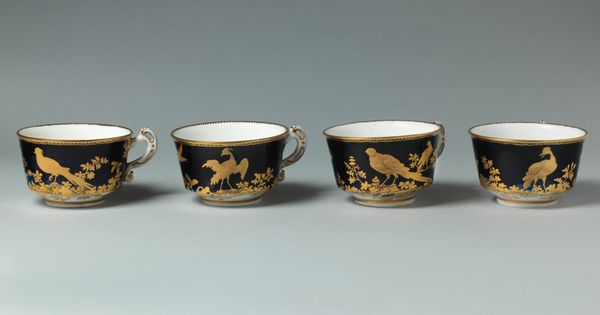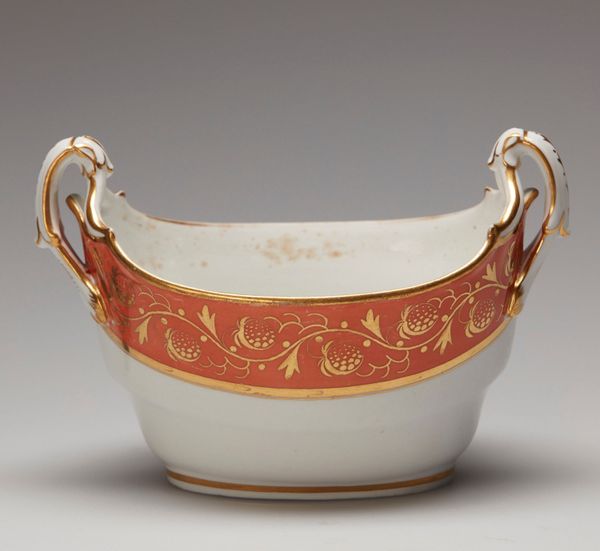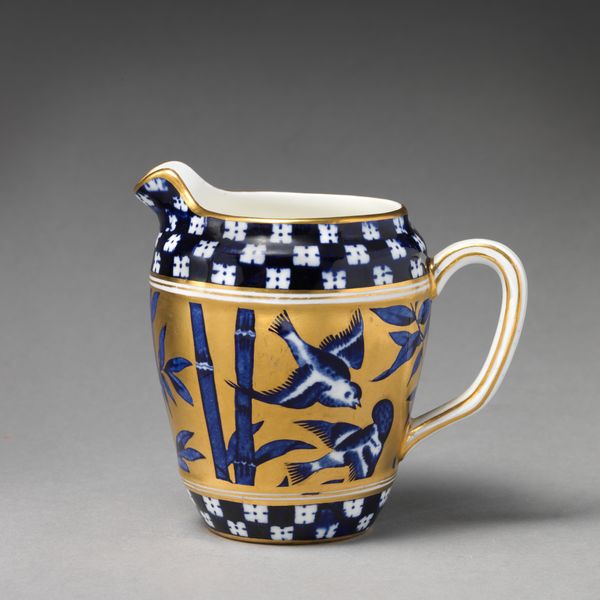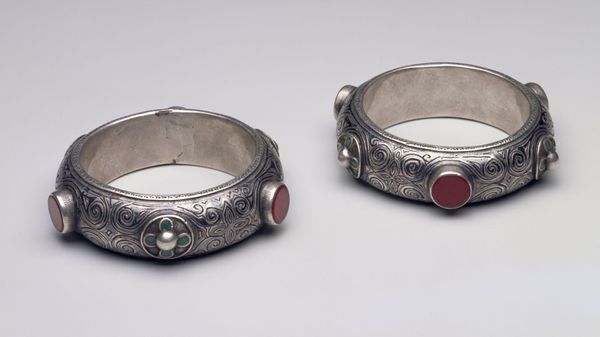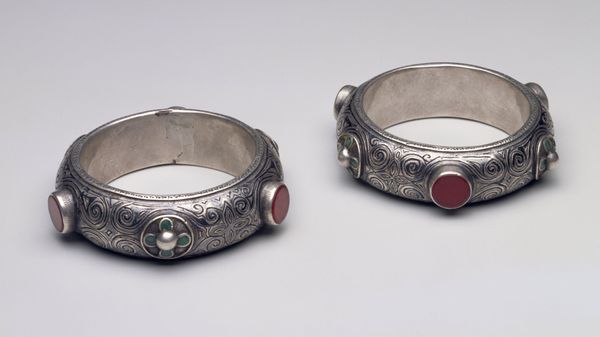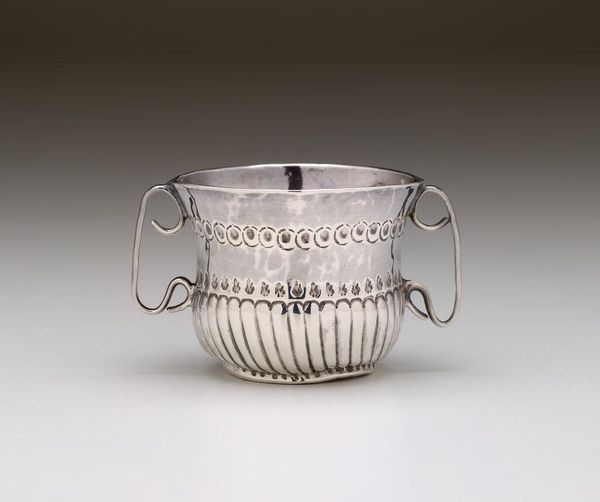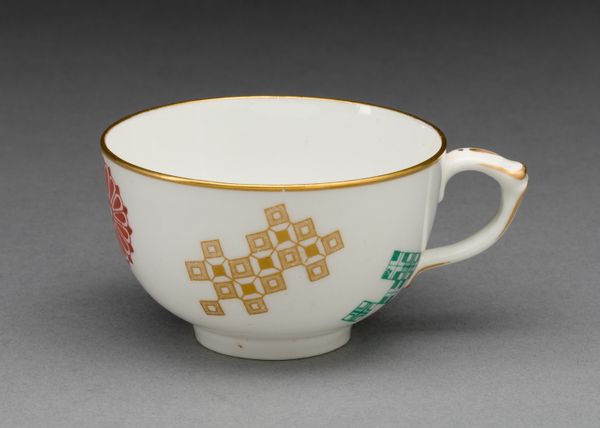
ceramic, porcelain
#
greek-and-roman-art
#
ceramic
#
porcelain
#
england
#
decorative-art
Dimensions: 5 3/4 x 10 x 7 1/2 in. (14.61 x 25.4 x 19.05 cm)
Copyright: Public Domain
Curator: Looking at these, I'm immediately struck by how clean and classic they appear. It's a soothing composition, yet there's a playful element in the red figures and patterns. Editor: These porcelain Jardinières, crafted in England around 1800, pull heavily from Greco-Roman aesthetics. I find that neoclassical period always intriguing, especially regarding how the past is reimagined and reinterpreted to meet contemporary social and political needs. Curator: Indeed. Note the stylized, almost copied-and-pasted effect of the figures within vase-like containers adorning the surface. It speaks volumes about cultural identity and appropriation—particularly in an empire seeking legitimacy and historical gravitas. What do you make of their duplication here? Editor: Repetition intensifies symbolic presence. Each vase becomes a self-referential echo chamber: vases bearing imagery *of* vases. The circularity evokes classical notions of balance and harmony but is also slightly absurd. These echoey reflections within reflections call to mind theories of historical re-enactment within ritual... What about you, what stands out? Curator: The stylized motifs. The dark bands, small bursts that appear as stars...these small decorative touches feel simultaneously elegant, refined, and… somewhat mass-produced. It underscores decorative art's uneasy tension between craft and commodity in that historical period. Editor: Right, these motifs, seemingly innocent decorations, hint at something more. Given that English Neoclassicism became intertwined with discussions of empire and nationalism, perhaps these vases aren't simply containers for plants. Curator: Interesting. I wonder, too, about who might have commissioned these. What statements were they making, if any, by purchasing such objects? Were these overt signs of societal standing? Editor: Quite possibly, given the symbolic connotations associated with ceramic items from that era. Curator: Considering how these Jardinières, both decorative and symbolic, invite consideration for identity and influence, I will consider the importance of acknowledging the cultural narratives around material artifacts. Editor: I concur, it is important for us to see this not just as ornamentation.
Comments
No comments
Be the first to comment and join the conversation on the ultimate creative platform.
